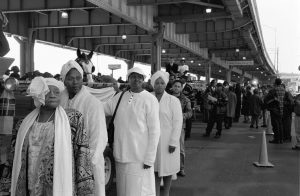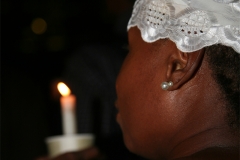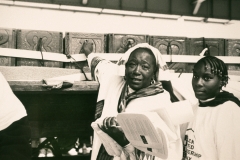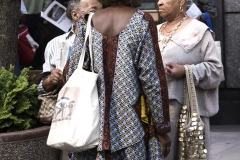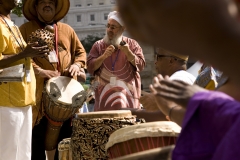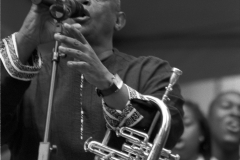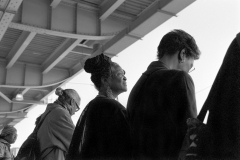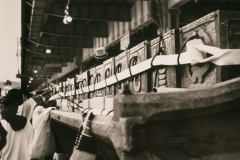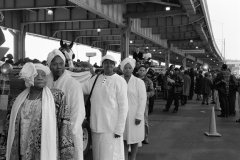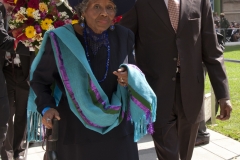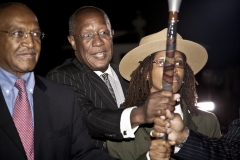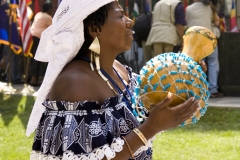After over four centuries of development and expansion, unmarked burial grounds and its inhabitants lay silent and purposefully forgotten. An excavation for yet another federal office building and resurfacing of Chambers Street in lower Manhattan, revealed the skeletal remains of over four hundred men, women, and children. Through epistemicide and the continued determination to further suppress the historic importance of the enslaved in colonial New York, the intention at the time of the finding was to build over the discovery. After a fury of letters to local officials and gatherings in protest, forced investigation confirmed that during the seventeenth and eighteenth centuries, free and enslaved Africans were buried in a 6.6-acre burial ground, beyond the boundaries of the original New Amsterdam Settlement. Beginning on October fourth, 2004, and continuing annually to October of 2007, a major display of the importance of this historical find engaged lower Manhattan from the South Street Sea Port to Duane and Elk Streets.
On Friday October fifth 2007, the memorial dedication of the African Burial Grounds National Monument at Duane and Elk Streets was celebrated. A celebration that was too long in coming, fraught with resistance from the New York City government officials, and long over due.
In 2004, photographs from this collection were added to the Photography and Print Archives of the Schomburg Center for Research in Black Culture. In 2009, photographs from this series received Honorable Mention in the category of The Deeper Perspective from the International Photography Awards.
